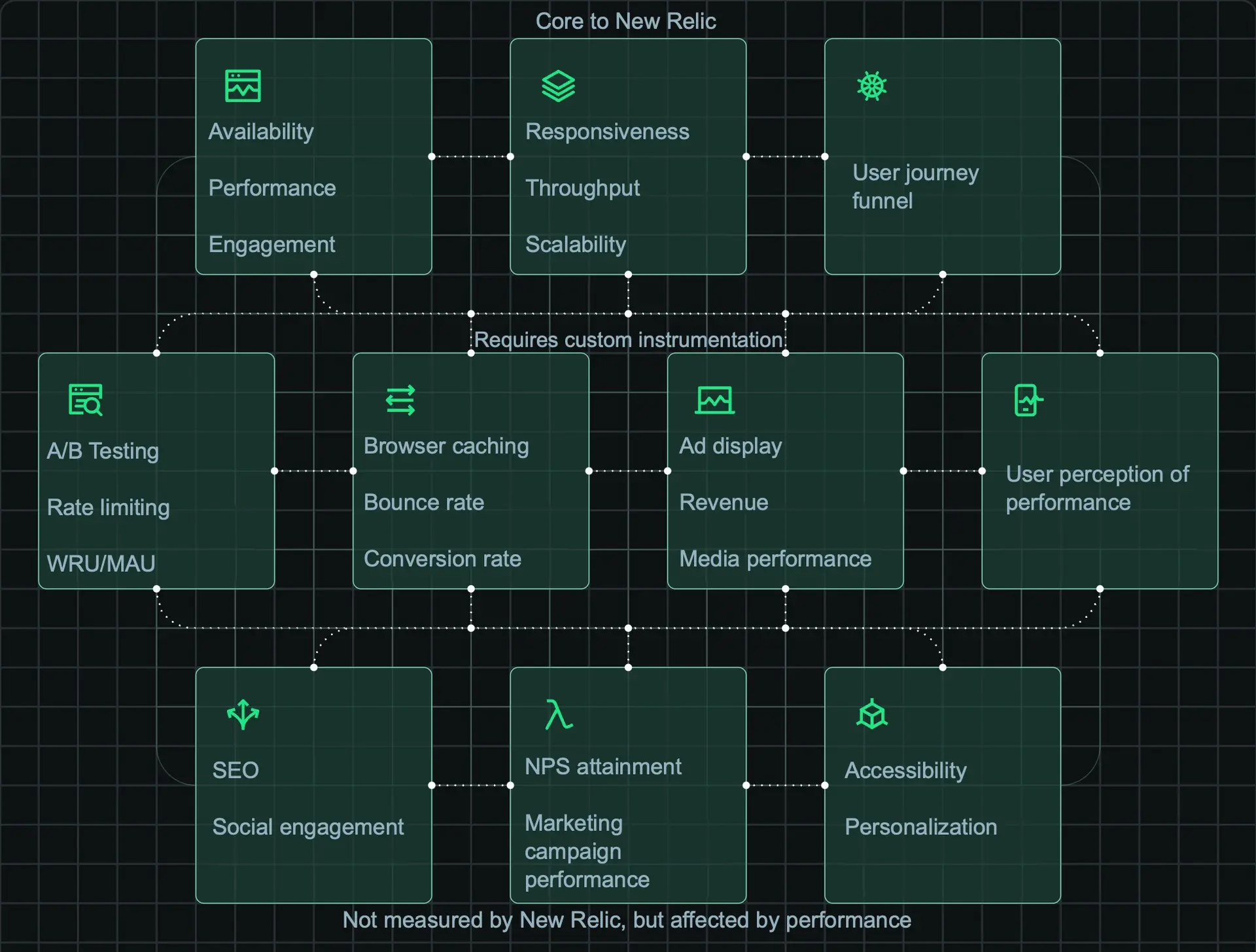디지털 고객 경험은 모든 디지털 터치 포인트(웹, 모바일, IoT)에서 사용자가 서비스와 상호 작용하는 방식의 품질을 나타냅니다. 그러나 추적해야 할 사항이 많습니다. 서비스의 가용성, 서비스의 가용성을 보장하는 성능, 사용자에게 필요한 정보를 제공하는 콘텐츠의 품질, 제품과 콘텐츠의 관련성을 관리해야 합니다. 사용자가 계속 참여하도록 합니다.
New Relic은 디지털 경험의 성능을 측정하고 개선하는 데 도움이 됩니다. 이 튜토리얼에서는 의미 있는 방식으로 이 경험을 개선하기 위해 다음을 수행하는 방법에 대한 지침을 제공합니다.
- 글로벌 기능, 사업 분야, 지역과 관련된 고객 경험을 살펴보세요.
- 비즈니스 이해 관계자에게 관심 있는 사항에 대해 다시 보고합니다.
- 다음에 개선할 사항의 우선순위를 정하세요.

요구 사항
시작하기 전에 플랫폼의 몇 가지 특정 부분을 준비하고 실행해야 합니다. 여기에는 다음이 포함됩니다.
구성된 합성 모니터:
- 익명 사용자용으로 구성된 Ping 모니터
- 로그인 흐름에 대해 구성된 스크립팅된 합성 검사
- 각 도메인과 각 로그인 흐름에 대해 모니터를 구성해야 합니다.
다음 사항에 대한 기본 지식을 갖는 것도 도움이 됩니다.